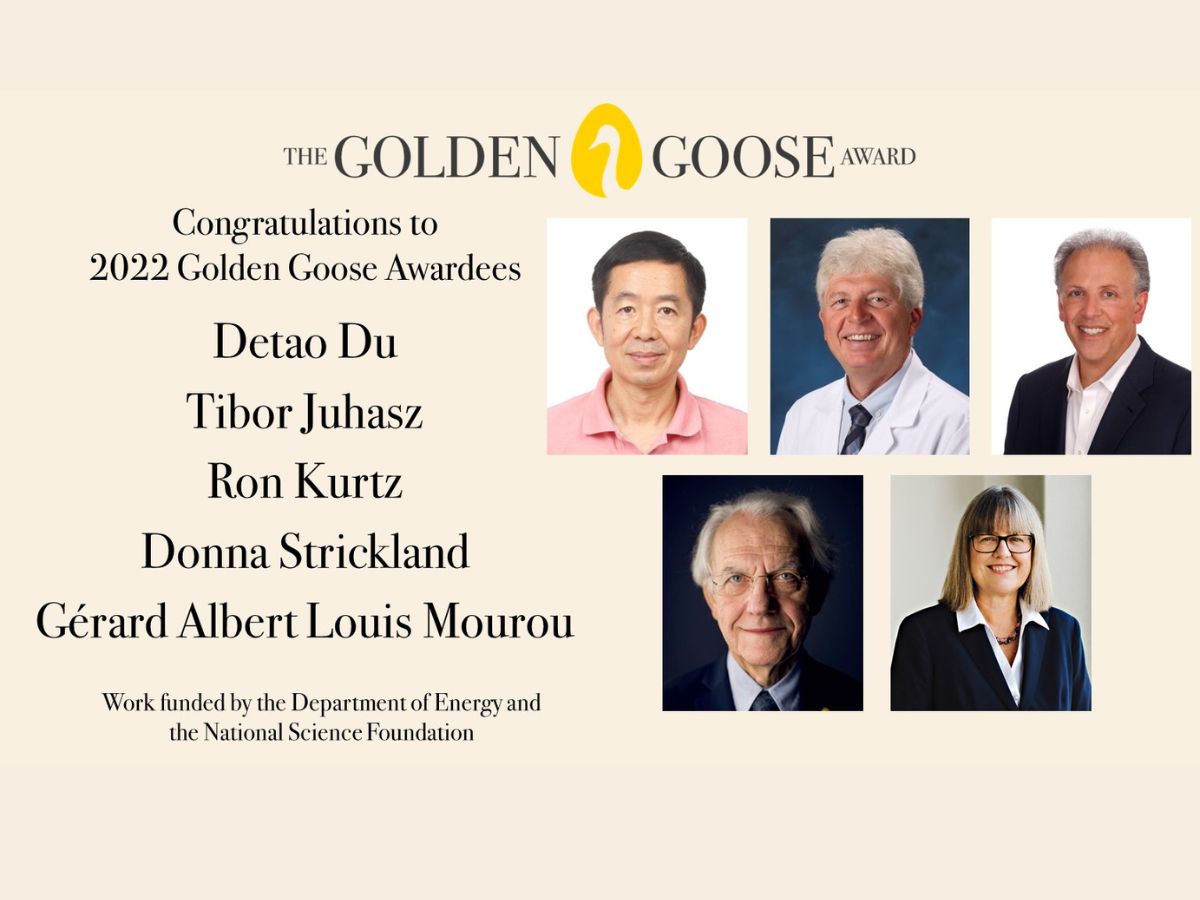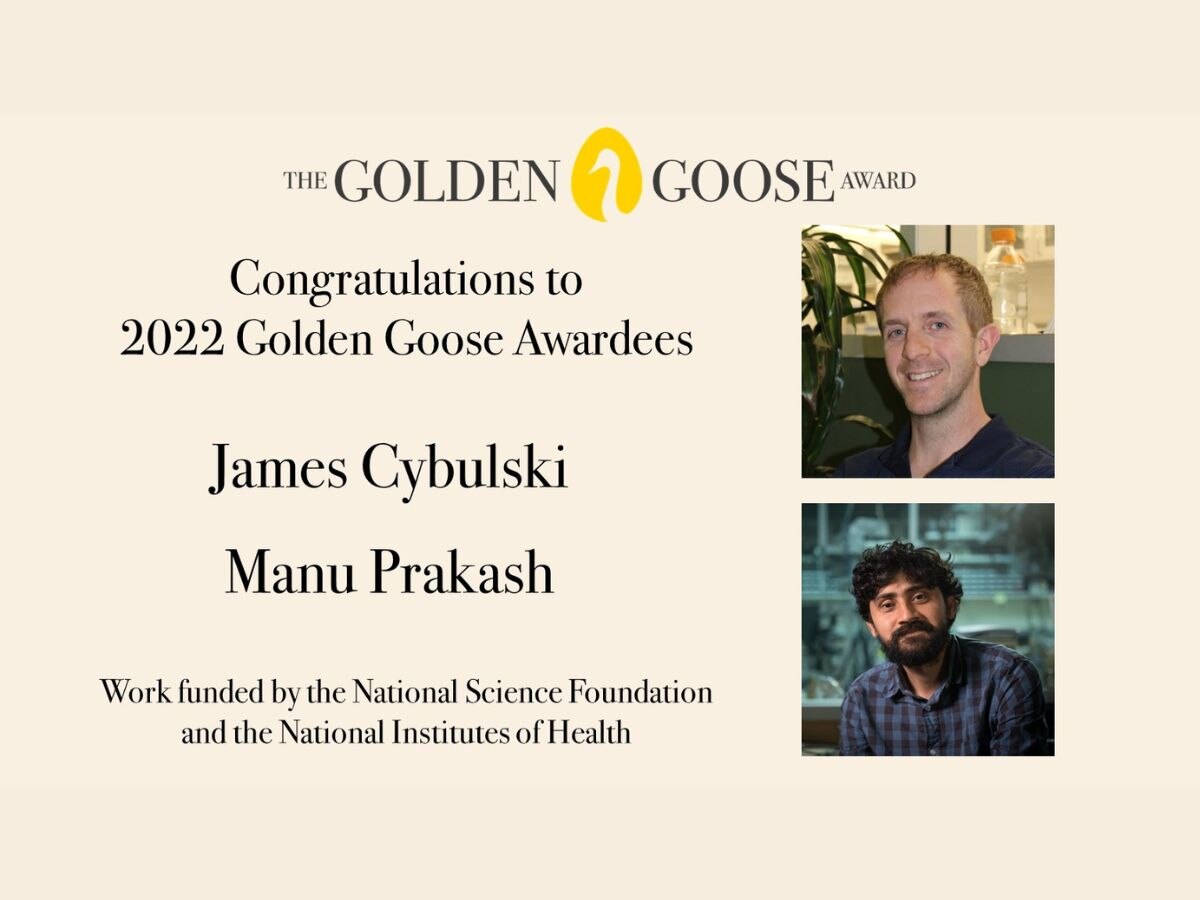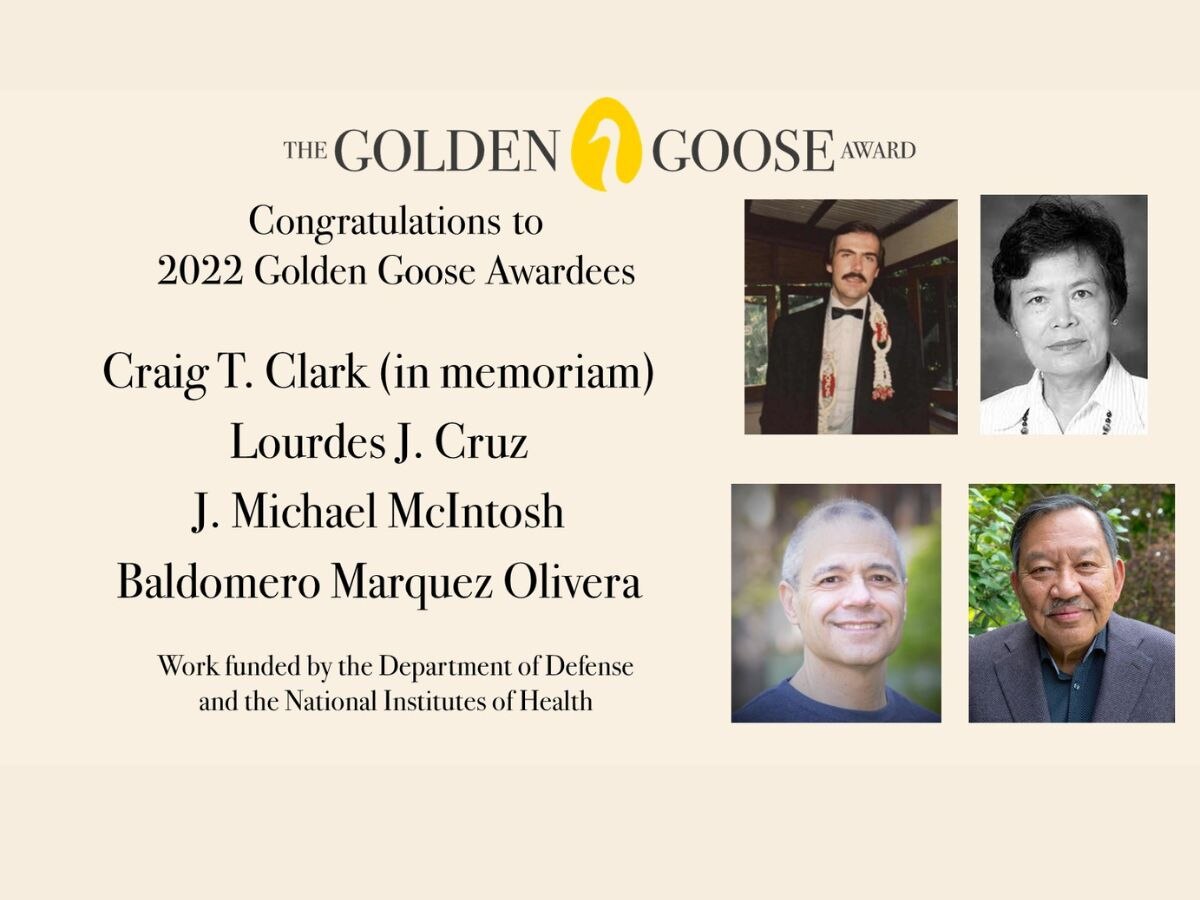Golden Goose Awards Honour 11 Researchers For Breakthroughs in Eye Surgery, Non-Opioid Pain Reliever, And More
The Golden Goose Awards honour scientific research that may have sounded funny, appeared obscure, or which was not expected to yield results in the beginning, but ultimately, led to breakthroughs.

The American Association for the Advancement of Sciences (AAAS), the largest multidisciplinary scientific society in the world, hosted the 11th annual Golden Goose Award Ceremony on September 14, 2022 (September 15 according to Indian Standard Time). The Golden Goose Award Ceremony is a celebration of federally funded scientific breakthroughs that unexpectedly benefits society. This year, Golden Globe Awards honoured 11 researchers for breakthroughs such as a novel approach to corrective eye surgery, and a non-opioid pain reliever, among others. The Golden Goose Award honours scientific research that may have sounded funny, appeared obscure, or which was not expected to yield results in the beginning, but ultimately, led to breakthroughs.
This year's Golden Goose Awards Ceremony was held a month after United States President Joe Biden signed the historic CHIPS and Science Act, which will boost American semiconductor research, development, and production.

The scientific discoveries made by this year's awardees are bladeless LASIK, a novel approach to corrective eye surgery that is now considered the standard in the field and used by millions, a way to construct a low-cost, high performing paper microscope, and a non-opioid pain reliever, hidden in the venom of tiny cone snails. Cone sea snails living off the coastal waters of the Philippines contain poison which could be used as a non-opioid pain killer.
A Lab Incident Led To Better Eye Surgery For Millions Of People

The researchers who received the Golden Goose Award for bladeless LASIK are Ron Kurtz from ophthalmic medical technology corporation RxSight, Tibor Juhasz from California-based firm ViaLase, Detao Du from Rayz Technologies, Gérard Mourou from Ecole Polytechnique, and Donna Strickland from University of Waterloo.
A graduate student at the University of Michigan's Center for Ultrafast Optical Science (CUOS) experienced an accidental injury to his eye, nearly 30 years ago. His vision was not severely affected, a statement released by AAAS says.
The observation of the very precise and perfectly circular damage produced by the laser led to a collaboration of researchers who, eight years later, developed a bladeless approach to corrective eye surgery.
The process is called bladeless LASIK. It uses a femtosecond (unit of time equal to one millionth of a billionth of a second) laser rather than a precision scalpel cut into the human cornea before it is reshaped to improve the patient's vision.
Gérard Mourou and Donna Strickland received the 2018 Nobel Prize in Physics "for their method of generating high-intensity, ultra-short optical pulses". The two researchers created these laser pulses without destroying the amplifying material. They amplified the laser pulses which could be used for many applications including corrective eye surgeries.
Paper Microscopes That Make Science Accessible

The researchers who received the Golden Goose Award for discovering a way to construct a low-cost, high-performing paper microscope that can be used to diagnose disease and expand science education in remote areas are Manu Prakash from Stanford University and Jim Cybulski from Foldscope Instruments Inc.
Prakash was intrigued by a technical challenge while he was researching in remote areas of India and Thailand, according to AAAS. Transport, training, and maintenance barriers in certain parts of the world can make state-of-the-art microscopes inaccessible.
Prakash found a potential solution to this challenge in paper, and along with graduate student Jim Cybulski, designed a paper microscope known as the Foldscope. They used principles of origami applied to printed paper, matchboxes, and file folders to develop the microscope. Foldscope can achieve powerful magnification with materials that cost less than $1 to manufacture.
A decade after the invention, two million Foldscopes have been distributed in over 160 countries. The Foldscope is used to diagnose infectious diseases and identify fake drugs, among other applications.
Pain Reliever From Snail Venom

The researchers who received the Golden Goose Award for the discovery of a non-opioid pain reliever, hidden in the venom of tiny cone snails, are Craig. T Clark (in memoriam), Lourdes J Cruz from University of the Philippines, J Michael McIntosh from University of Utah, and Baldomero Marquez Oliver's from University of Utah. The pain reliever greatly decreases pain for patients with chronic illnesses and can help researchers develop new ways to map the body's nervous system.
Lourdes Cruz and Baldomero Marquez Olivera were impeded by supply chain issues while conducting DNA research in the Philippines. Therefore, they started examining cone snails, a group of highly venomous sea molluscs. These are found in abundance along the coastal waters of the Philippines.
ALSO READ | From A Sea Snail, Scientists Hope To Develop An Alternative Painkiller To Morphine
After decades of work, Cruz and Olivera, along with Craig Clark and Michael McIntosh, discovered the raw material for a non-opioid pain reliever and a powerful new tool for studying the central nervous system. The raw material was hidden in the cone snail's potent venom.
These unusual discoveries unexpectedly benefit society.






































